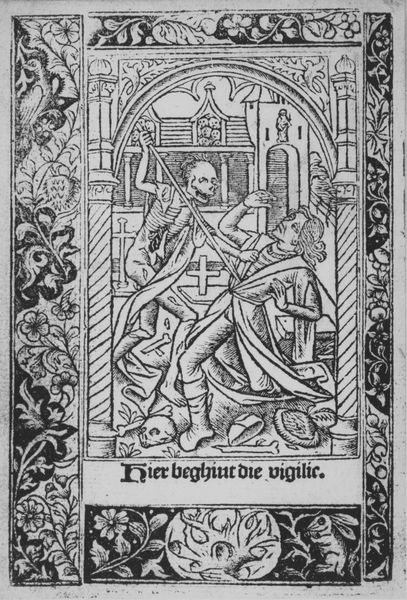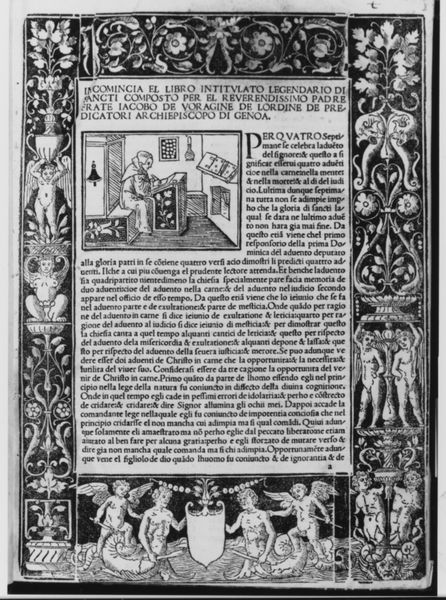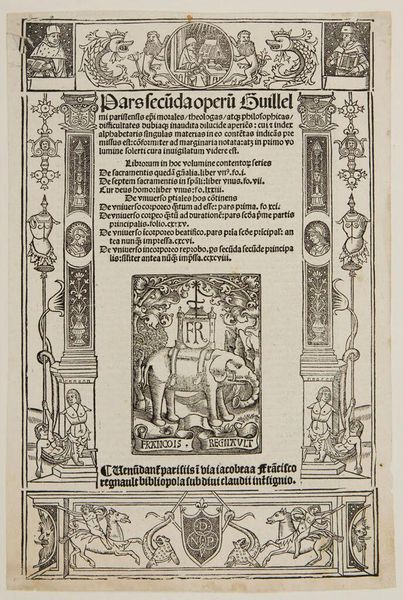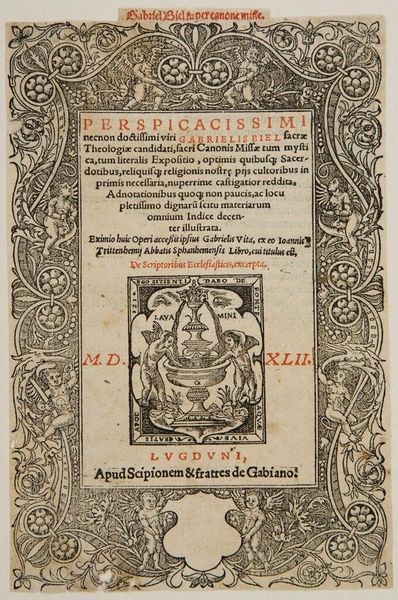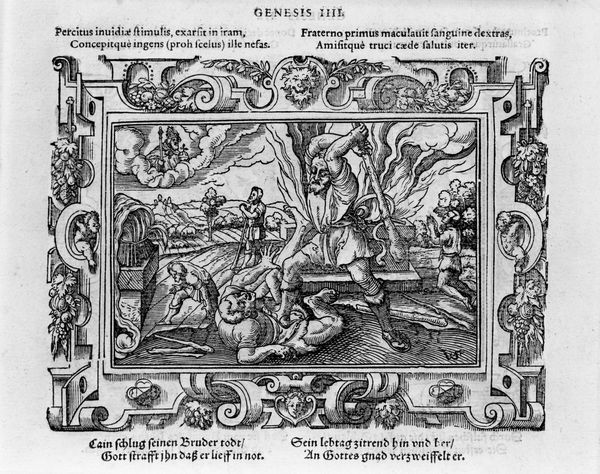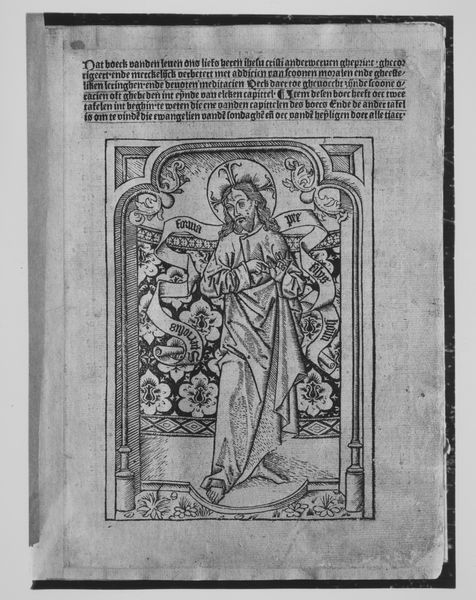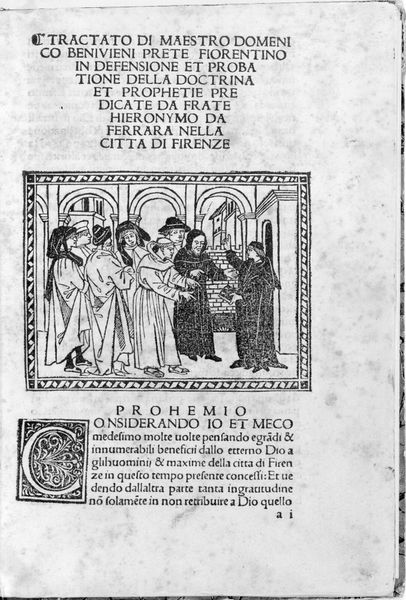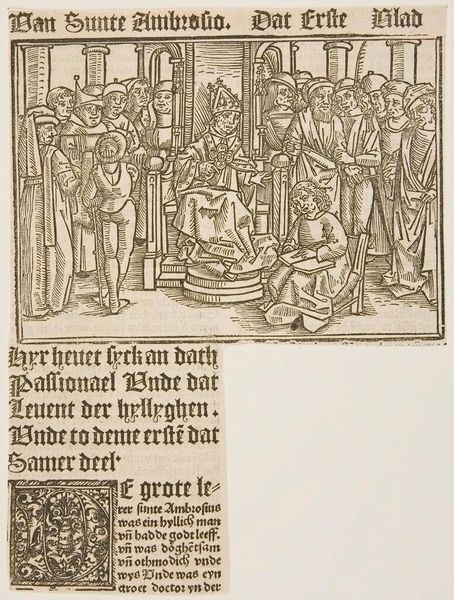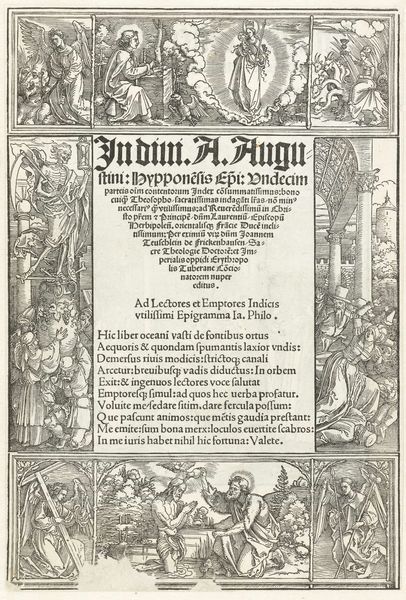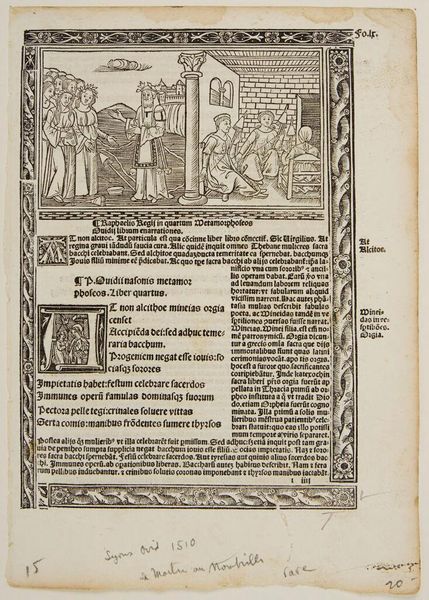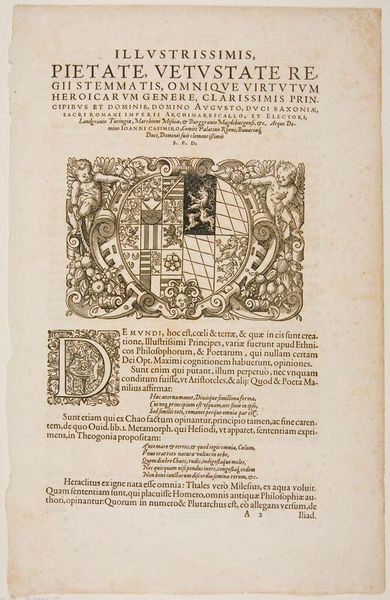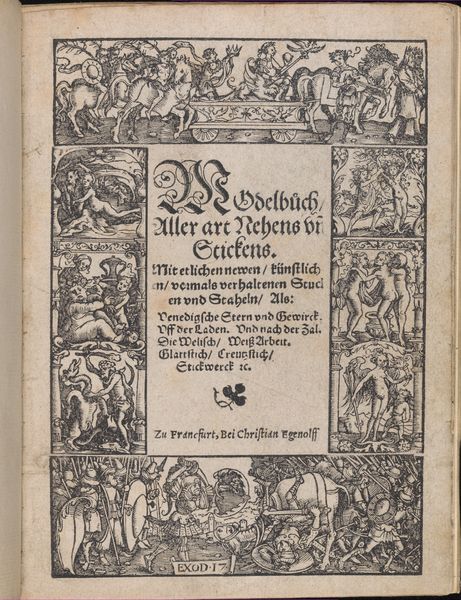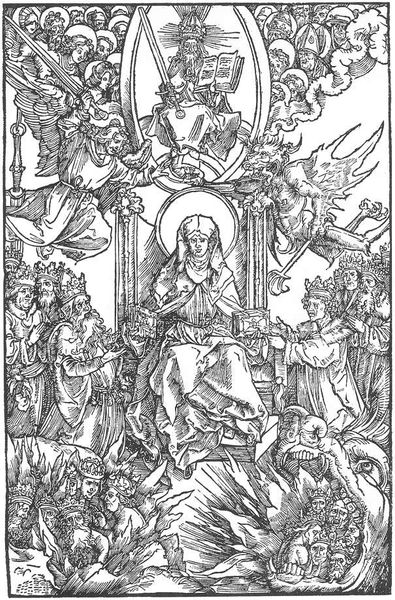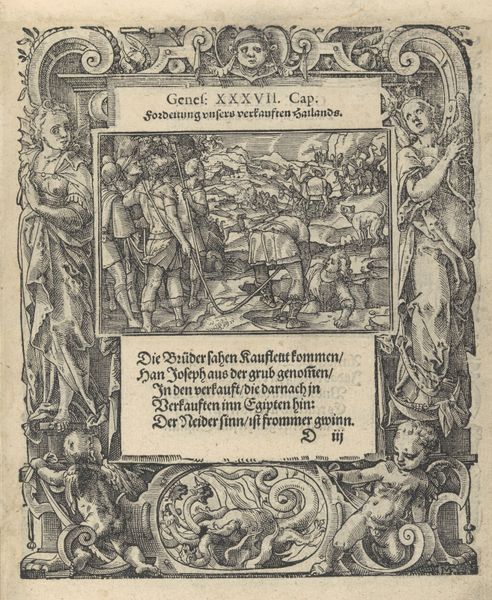
Title plate with St. Peter and St. Paul 1523
0:00
0:00
hansholbeintheyounger
Kunstmuseum Basel, Basel, Switzerland
graphic-art, print, woodcut, engraving
#
graphic-art
# print
#
woodcut
#
christianity
#
history-painting
#
northern-renaissance
#
engraving
#
christ
Dimensions: 24.3 x 16.6 cm
Copyright: Public domain
Curator: This woodcut, "Title plate with St. Peter and St. Paul," was created by Hans Holbein the Younger in 1523. It is currently housed here at the Kunstmuseum Basel. Editor: The immediate impression is quite striking. It is highly detailed in monochromatic textures, displaying intricate patterning and symbolic forms packed within a contained space. It demands a sustained look. Curator: Indeed. As a printed title page for a German New Testament, its format reflects both its function and the era's socio-religious context. We see not only Peter with his keys and Paul, book in hand, but also an emphasis on the printing process through the ornate typography and printer's marks along the bottom. Editor: Note the stark contrast between the rigidity of the figures and the chaotic, organic motifs woven around the border, suggesting a dynamic interplay of structure and freedom. Holbein uses light and shadow effectively here to add dimension despite its relatively small scale. Curator: Consider that woodcut production itself—the meticulous carving of the block, the physicality of the printing process. These were collaborative efforts, relying on skilled craftspeople. These mass produced woodcuts democratized the image, spreading visual messages to a wider, literate public beyond traditional avenues. Editor: Yes, the figures are rendered with great precision and confidence, while the embellishments have a raw, almost brutal energy. Notice, especially in the top corners, how the textural variation provides an element of visual tension. Curator: And that text, boldly announcing a translation into German, signals the growing importance of vernacular languages in religious life during the Reformation. It represents a deliberate challenge to the established authority of the Latin Vulgate. Editor: Ultimately, for me, the engraving presents a fascinating synthesis of visual and textual elements, combining religious symbolism with formal compositional tension. Curator: And understanding it fully requires us to delve into the social conditions of its production, reception, and the complex interactions between artist, craftspeople, and the rise of print culture.
Comments
No comments
Be the first to comment and join the conversation on the ultimate creative platform.
